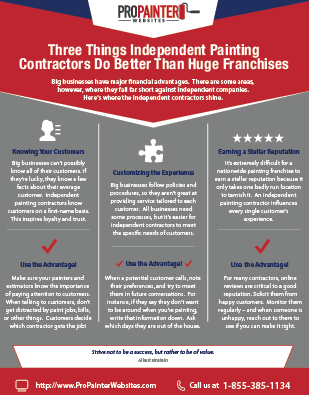Essential Seasonal Aspects Of Commercial Exterior Painting: What You Need To Understand
Essential Seasonal Aspects Of Commercial Exterior Painting: What You Need To Understand
Blog Article
Material Written By-Fox Rosendal
When you're preparing an industrial exterior painting task, seasonal aspects can make or break your results. You'll wish to think about how temperature and humidity impact paint application and drying times. Picking the best period can ensure your paint adheres effectively and lasts much longer. But which seasons are genuinely the very best for this type of job? Let's explore the key elements that can impact your task's success.
The Impact of Temperature Level on Paint Application
When you're planning an industrial external paint task, the temperature can dramatically affect exactly how well the paint sticks and dries out.
Ideally, you want to paint when temperature levels range in between 50 ° F and 85 ° F. If it's as well chilly, the paint might not heal effectively, leading to problems like peeling or splitting.
On the flip side, if it's also warm, the paint can dry out as well swiftly, protecting against correct adhesion and resulting in an irregular coating.
You should also think about the time of day; early morning or late afternoon supplies cooler temperatures, which can be a lot more positive.
Constantly check should you paint all walls the same color for the certain paint you're using, as they usually offer advice on the excellent temperature variety for optimum outcomes.
Humidity and Its Effect on Drying Times
Temperature isn't the only ecological aspect that influences your commercial outside paint job; moisture plays a substantial duty also. High humidity degrees can decrease drying times substantially, influencing the general top quality of your paint work.
When the air is saturated with dampness, the paint takes longer to treat, which can bring about concerns like inadequate adhesion and a greater threat of mold growth. If you're painting on a specifically damp day, be prepared for extended wait times between layers.
https://daltonqwchm.bloggazzo.com/33413774/home-painters-a-novice-s-overview-to-rejuvenating-your-home to monitor neighborhood weather conditions and strategy accordingly. Preferably, go for moisture degrees in between 40% and 70% for optimum drying.
Maintaining these factors in mind guarantees your project stays on track and provides an enduring finish.
Best Seasons for Commercial Outside Paint Projects
What's the best season for your commercial exterior paint projects?
Springtime and very early fall are typically your best bets. Throughout these periods, temperatures are moderate, and moisture degrees are typically reduced, producing suitable problems for paint application and drying out.
Avoid summer season's intense heat, which can cause paint to completely dry as well swiftly, bring about bad bond and coating. Similarly, winter's chilly temperatures can hinder proper drying and treating, running the risk of the durability of your paint work.
Aim for days with temperature levels between 50 ° F and 85 ° F for optimum outcomes. Bear in mind to inspect the local weather prediction for rainfall, as wet conditions can destroy your job.
Planning around these aspects ensures your painting job runs efficiently and lasts longer.
Verdict
To conclude, preparing your business external painting jobs around seasonal considerations can make a significant difference in the outcome. By scheduling job during the perfect temperatures and humidity levels, you'll ensure better adhesion and drying times. Bear in mind to watch on local weather prediction and select the correct time of year-- spring and very early autumn are your best bets. Taking these actions will certainly assist you attain a resilient and specialist finish that lasts.
